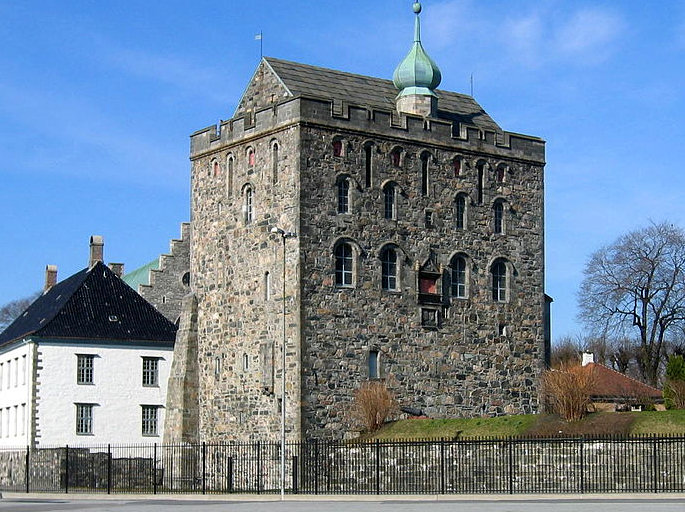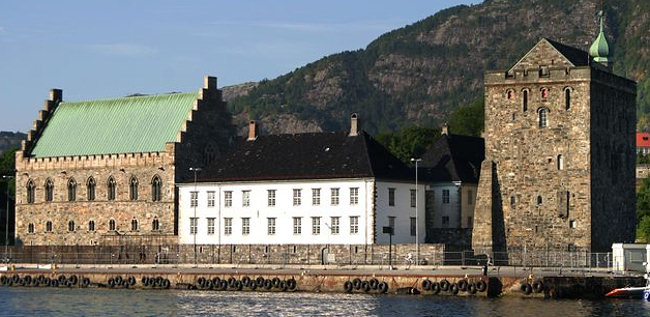The Bergen Fortress Bergenhus in Norway
Once you have finished looking at the Old Hanseatic Leagues wooden warehouses of Bryggen Wharf carry on walking north west along the harbour road until you come to the Bergen Fortress called Bergenhus. This section of the Bergen port road is called Festningskaien.

Built at the entrance to the harbour it provided security for the ships and their expensive goods in the port. It does not look like costal fortresses you find in many other parts of Europe. There are no high walls. This fortress worked mainly a gun platform.
Large land based cannon, with longer ranges than those normally kept on the wooden sailing ships of the day, were deployed facing out to sea. They could fire on enemy ships without fear of return fire hitting them.
It was only when I visited the Bergen Fortress complex did I realise how important it was to Norwegian history. Bergen for hundreds of years was the capital of Norway and the Bergenhus was the royal residence. Norway's medieval equivalent to Buckingham Palace.

The complex dates back to the 1240s but there have been many additions over the years. As well as its defensive military role the grounds of the Bergenhus fortress contained churches, chapels, a cathedral, living quarters for the clergy, servants, soldiers and courtiers as well as the royal residence.
The first thing you see as you approach the Bergenhus from the city centre is the large imposing medieval stone keep. It at first reminded me of some of the stone block houses you find in Scotland as well as the central building in most Norman castles. The first part of the tower was built 1270 but the present outer structure was constructed at different times in the 1500s.
I noted on the information boards that the Governor of the tower Erik Rosenkrantz at that time employed Scottish architects and stonemasons to do a lot of the work so that explains why it looks a bit Scottish. The tower is named after him Rosenkrantz Tower.
Further on from the Bergenhus tower you will find a medieval Gothic style stone long hall with gabled ends dating from the early 1200s. It is called Haakon's Hall (Hakonshallen) after King Hakon Hakonsson. Royal weddings and other important events were held here.
It looks a bit like a church or chapel but it is Norway's largest surviving secular building that dates back to the medieval period. Today the Bergenhus complex is looked after by the Royal Norwegian Navy and the Bergen Museum. If you are lucky you might be able to attend a music concert, choir or chamber music recital.
Travel books

